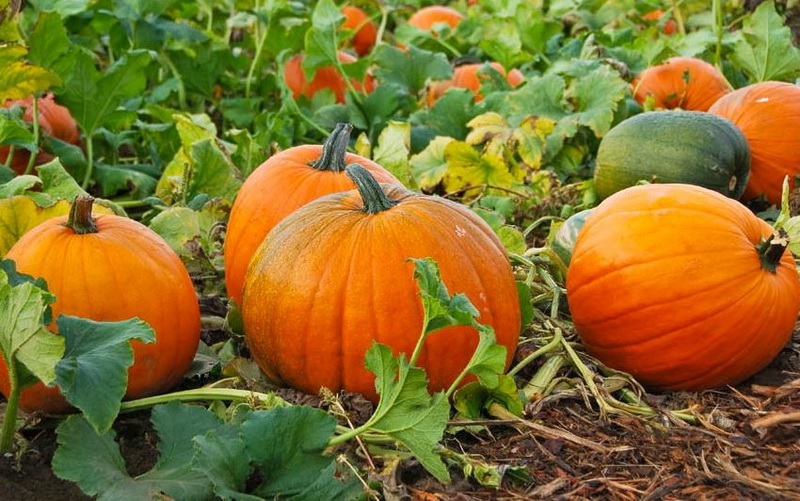Pumpkins are not only about Halloween. The vegetables are incredibly useful and nutritious. By the way, if we speak using the language of science, pumpkins are fruit as they contain seeds. If you doubt whether it’s worth growing this plant, you should consider the following health benefits you may get:
- Plenty of vitamin A;
- No extra calories. The crop is the food of dream of every girl who wants to lose weight. It’s 94% water that means you can eat it as much as you want;
- A lot of antioxidants which are able to reduce the risk of chronic diseases;
- An ideal mix of vitamins to boost your immunity;
- Fibers and potassium to prevent heart strokes.
If you want to savor the rich harvest, it’s important to follow definite pieces of advice. There is nothing difficult in cultivating the crop, yet, it’s better to create proper conditions.
Growing season
Pumpkins require a long growing season. You need at least 75 frost-free days to get the first results. Even the lowest frost is able to reduce your harvest to zero.
Choosing seeds
There are a lot of available types of pumpkins. They differ in size, taste, texture, and color. You can get both giant and miniature seedlings. The most popular types include Butternut Squash, Gourds, Turban squash, Lumina, and Australian Blue or Jaradale pumpkins.
Where to plant
You should carefully choose the site where you are going to grow the vegetables. There are several important points to keep in mind. The best place is one with full sun, The seedling takes a lot of space. The vines sprawl far away. Some varieties need from 50 to 100 square feet. Yet, if your garden is small, it’s possible to pick up kinds which require minimum space.
The suitable soil
Like many other plants, pumpkins need definite soil to grow well. It should be a good and well-drained place. It’s worth preparing the soil in early spring as soon as it becomes warm. The best variant is slightly acid or neutral soil. It’s a good idea to fertilize the site with the help of rotting cow manure.
Pumpkin “hills”
The experienced gardeners prefer to plant the seedling in special hills. They are mounds of dirt raised off of the ground. It’s better to place hills 20 feet apart from each other. The frost protection is a crucial aspect especially to the regions with unstable weather conditions. It’s necessary to cover the spot with landscaping fabric. It also protects your garden from weeding.
Lots of water
You have to provide your seedlings with at least an inch of water once per week. Drip systems are an effective solution for your garden. Yet, it’s not desirable to moisture the foliage. Otherwise, the plants can get various diseases.
Define the size and number of fruits
It’s up to you to control the size and number of crops you get. If you need smaller fruit, you may leave all the flowers on the vine. If you want bigger fruit, you may get rid of several flowers. It’s enough to leave 3-4 of them.
Harvest time
It’s important to gather your harvest before the first frost. It’s better to use pruning shears to cut the fruit from the vine.
In conclusion, it’s worth mentioning that growing pumpkins is an easy and fruitful process. If you want to get the pack of vitamins with small efforts, you can hardly find the better seedlings.
